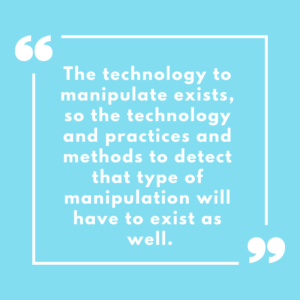Transparency and Protection
Published on February 27, 2019, at 9:24 p.m.
by Mickey Kennedy.
Transparency has risen in the communication industry as a buzzword and a modern issue that needs to be addressed. But transparency has always been around, and it has always been a concept that public relations practitioners have had to balance in order to protect and promote brands. What has changed is the technology and the communication industry along with it.
The following quotes on this subject were pulled from a roundtable discussion with The Plank Center for Leadership in Public Relations board members on transparency and protection hosted by master’s degree students and PR undergraduates in the Department of Advertising and Public Relations at The University of Alabama.
In a modern digital age, the very base of transparency has evolved as the media landscape has changed. With the spread of “fake news” or manipulated information, Visiting Professor Mark Harris of The University of Alabama said, “The ability to manipulate information —everything that we see, hear, read – means, we now have to question the authenticity and integrity of the information we are consuming. That is an issue your generation [millennials] is actually going to have to figure out. The technology to manipulate exists, so the technology and practices and methods to detect that type of manipulation will have to exist as well.”
Bridget Coffing, former chief communications officer of McDonald’s, noted “the absolute bombardment and instantaneousness of news traveling and citizen journalism” is a brand new issue practitioner have to face, along with the problem of “Who do you believe?”
Rick Looser of The Cirlot Agency also spoke on the simplicity of “modern journalism,” and how with a smartphone, “you can have more people watch something in 20 seconds than my dad had his whole life.”
With the mass spread of fake or manipulated information, PR professionals must be able to control the dissemination of it from the clients they represent and the best way could be from the inside.
“Transparency starts at the corporate culture and works its way out to communication,” said Looser.
Keith Burton of Grayson Emmett Partners agreed that this issue stems from the ground up in the corporate culture. “In companies today, that is one of the biggest issues with leaders, the lack of transparency and the lack of connection with the people on the front lines of companies,” he said.
Being open can lead to more trust and be used as a promotional strategy both inside and outside of a client. But with that comes the need to further understand how to protect a brand.
“You have to be really careful and think about unintended consequences,” Coffing explained. “You can call that protection, you can call it whatever you want, but I think the idea of trying to think through what is the impact or impacts of any decision you are going to take and who it is going to affect and how … that is just being strategic.”
The Institute for Public Relations wrote on two separate accounts of transparency and protection, as well as some “unintended consequences.” One example is Nike, which in the early 90s was not very transparent with its use of sweatshops and had become notorious for being a brand that abused its workers and forced them into very poor conditions. In time, Nike realized the best move forward was to steer clear from sweatshops and provide better working environments for its factory workers, as well as offer up-to-date information on the factories to the public.
Levi-Strauss faced a different transparency crisis as it was branded as a company with fair conditions and treated its employees well. But when the clothing brand closed the doors on a factory in Texas to move to Costa Rica, it faced a massive backlash from laid-off workers.
In these types of scenarios, Coffing stated that PR professionals have to push “decisions that will reflect your values and build trust with your various audiences.”
“Our job is to get, know and understand the facts, and then the first question we should ask after we know the facts is ‘What is the right thing to do?’” Coffing stated.
Harris echoed that sentiment, saying, “We [PR professionals] are often the only people who are going to ask that question. Finance is going to ask ‘What is the most profitable thing to do?’ Investor relations is going to say ‘How are our shareholders going to feel about this?’ We are the moral compass in a lot of these situations, and we are the only ones who have ‘protect the brand’ in our job descriptions.”

Being the “moral compass” for a brand requires the ability to understand the client’s values, how decisions they make can affect their image, and how to step in before things go wrong.
Harris added that because people can disagree about moral choices, part of the role of the PR leader is “helping others think through choices, and also understand the implications of any decision or business practice showing up in major media.”
Finally, our profession has a role to play in helping people understand how to avoid being part of the problem of low-integrity information. Transparency and protection will always be a part of a PR professional’s life. The way it needs to be handled may change throughout the years but at the end of the day, public relations will always have to be that moral compass.





